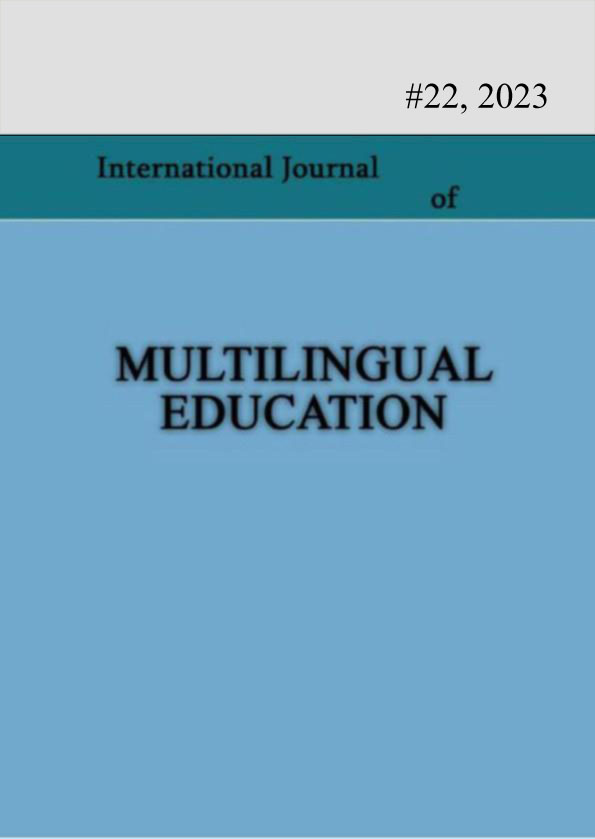Early Bilingual Education: The Foundation of Social Integration for Communities Representing National Minorities
Keywords:
Early bilingual education; Georgian as a second language; Strategy, Social integration.Abstract
The issue of minority integration has gained significant relevance and importance for all nations in the context of recent years marked by intensive migration and global conflicts. Experts specializing in national minorities highlight the pivotal role of the educational system as a fundamental tool for the civil integration of ethnic minorities in society. Proficiency in the state language among ethnic minorities is also seen as a significant prerequisite for successful integration. At the same time, bilingual education is receiving growing endorsement within the scientific community as a vital means for fostering bilingual literacy. Research studies affirm that this educational approach effectively addresses language policy challenges in Georgia. Nevertheless, an examination of the reforms and measures implemented to support the acquisition of the state language by minority groups, spanning from the post-independence period in the 90s to the present day, reveals a certain inconsistency in policy and reforms. This inconsistency stands as a primary contributing factor to less favorable outcomes in the field of education. Over the years, the neglect of a critical period for human development - early childhood education and development - has impeded progress in general and higher education. Notably, a pilot program for early bilingual education has been initiated in regions densely populated by national minorities. The program's design took into account international obligations and the sectoral priorities outlined in the Unified National Strategy of Education and
Science. While the initiative itself is significant, a challenge lies in the fact that the program was planned without a preliminary study of the local context. Consequently, measuring the effects of the intervention and considering the possibility of program expansion and replication on a geographical scale may prove challenging in the future
References
Action Plan (2022-2024). 2021 - 2022-2024 Action Plan of the National Education and Science Strategy for 2022-2030.
Association Agreement, (2014). Association Agreement Between the European Union and Georgia.
Bloch, M. (1991). Marianne Bloch, Critical Science and the History of Child Development's Influence on Early Education Research: https://www.tandfonline.com/doi/abs/10.1207/ s15566935eed0202_2 Civil Development Institute, 2017 - https://civilin.org/en/
Democracy at the level T.D Sisk. IDEA., (2001). Democracy at the Local Level: The International IDEA Handbook on Participation, Representation, Conflict Management, and Governance.
Geostat, (2014). 2014 General Population Census: https://www.geostat.ge/en/modules/ categories /568/ 2014-general-population-census.
OHCHR, Minority Rights, (2010). OHCHR, Minority Rights, International Standards and Guidance for Implementation,;
Social and Economic Exclusion of Ethnic Minorities, (2022). Social and Economic Exclusion of Ethnic Minorities, Graph 5: Distribution of the adult population according to the achieved level of education.
State Strategy for Civil Equality, (2021). State Strategy for Civil Equality and Integration 2021-2030.
Venice Commission Report, (2006). Venice Commission Report on Non-citizens and Minority rights, 69th Plenary Session.
Downloads
Published
How to Cite
Issue
Section
License
Copyright (c) 2023 Gulnara Bibileishvili

This work is licensed under a Creative Commons Attribution-NonCommercial 4.0 International License.
Copyright (c) - Authors who publish with this journal agree to the following terms: Authors retain copyright and grant the journal the right of first publication with the work simultaneously licensed under a Creative Commons Attribution-Noncommercial 4.0 International License, which allows others to share the work with an acknowledgement of the work's authorship and initial publication in this journal. Authors are permitted and encouraged to post their work online (e.g., in institutional repositories or on their personal website) prior to and during the submission process, as it can lead to productive exchanges, as well as earlier and greater citation of published work (see The Effect of Open Access). Authors may enter into separate, additional contractual arrangements for the non-exclusive distribution of the journal's published version of the work (e.g., post it to a repository or publish it in a book), with an acknowledgement of its initial publication in this journal.

